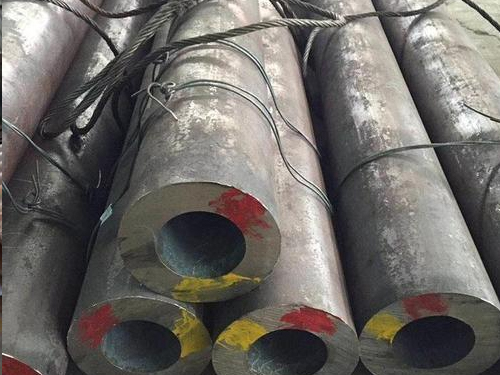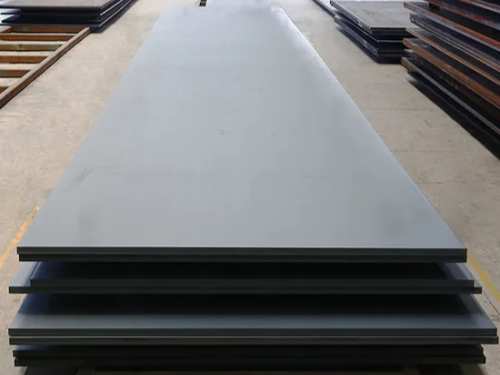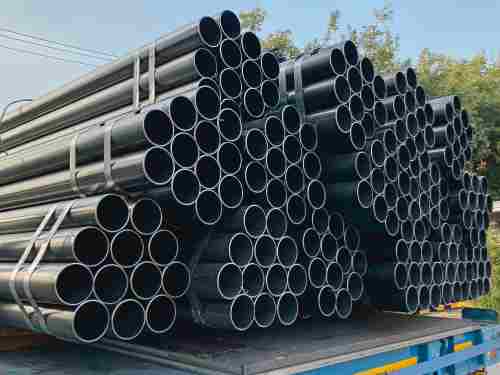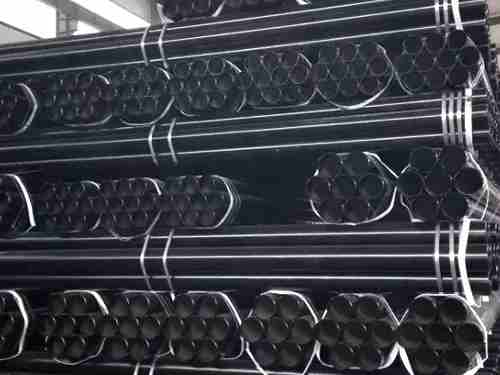Compared with 12CrMoV steel, 12Cr1MoV alloy steel pipe has higher oxidation resistance and thermal strength.
Main characteristics: the creep limit of this steel is very close to the permanent strength value, and it has high plasticity under the condition of permanent stretching; the steel has good manufacturability and weldability, but it needs to be preheated to 300 ℃ before welding, and after welding Stress relief is required.
It is a widely used steel grade for high pressure, ultra-high pressure and subcritical power plant boiler superheaters, headers and main steam conduits. At 580 ℃, it still has high thermal strength and oxidation resistance, and has high permanent plasticity. The production process is simple and the welding performance is good, but it is more sensitive to the normalizing cooling rate. Long-term use at 580°C will produce pearlite spheroidization. The biggest advantage is that it can be recycled 100%, which is in line with the national strategy of environmental protection, energy saving and resource saving. The domestic policy encourages the expansion of the application field of 12Cr1MoV alloy steel pipe.
At present, the consumption of 12Cr1MoV alloy steel pipe in my country accounts for only half of the total amount of steel in developed countries. The expansion of the use field of 12Cr1MoV alloy steel pipe provides a broader space for the development of the industry. According to the research of 12Cr1MoV alloy steel pipe branch of China Special Steel Association, the demand for high-pressure 12Cr1MoV alloy steel pipe long products in my country will increase by an average of 10-12% in the future.

Process overview
Because of their different manufacturing processes, they are divided into hot-rolled (extruded) seamless steel pipes and cold-drawn (rolled) seamless steel pipes. Cold drawn (rolled) tubes are divided into two types: round tubes and special-shaped tubes.
Hot rolling (extruded seamless steel pipe): round tube billet → heating → perforation → three-roller skew rolling, continuous rolling or extrusion → tube removal → sizing (or diameter reduction) → cooling → billet tube → straightening → water pressure Test (or flaw detection) → mark → storage.
Cold drawn (rolled) seamless steel pipe: round tube billet → heating → perforation → heading → annealing → pickling → oiling (copper plating) → multi-pass cold drawing (cold rolling) → billet → heat treatment → straightening → Hydraulic test (flaw detection)→marking→warehousing
Three Characteristics of Microstructure Strengthening of 12Cr1MoV Alloy Steel Pipe
Usually, the microstructure of the alloy steel pipe determines the structural properties of the steel pipe, however, the structure strengthening determines the microstructure. After the cold-rolled alloy steel pipe is rolled, with the change of the cooling environment, the various bainite, martensite and other structural structures in the structure also change, which also leads to a great change in the structural properties of the steel pipe. , More steel pipes with different strength levels can be obtained by this method to adapt to different performance requirements. 1. The parent phase is required for tissue strengthening, that is, the parent phase for tissue strengthening should be contained in the elements of the steel pipe.
2. Microstructure strengthening is a process, including microstructure deformation and microstructure diffusion. With the change of the cooling environment, the microstructure of the alloy steel pipe may change in two ways, namely, diffusion and non-diffusion. In a low temperature environment, non-diffusion determines the microstructure. The process of deformation; in a high temperature environment, diffusion determines the change of tissue structure.
3. There are two important factors for tissue strengthening, namely tissue strain and environmental cooling. For example, in a heating environment or a cooling environment, the structure of the alloy steel pipe will gradually change with the change of temperature, and the energy state will change from low to high. In addition, looking at the spot of the steel pipe, it can be known that in the alloy steel pipe, a small amount of medium contains extremely fine density. Therefore, when adjusting the structural properties of steel pipes, we must always pay attention to the microstructure and properties of alloy steel pipes.
The hardenability mainly depends on the critical cooling rate, and the critical cooling rate mainly depends on the stability of the supercooled 12Cr1MoV alloy steel pipe. The main influences on the stability of the 12Cr1MoV alloy steel pipe are:
[1] The influence of chemical composition is mainly the influence of carbon element. When C% is less than 1.2%, with the increase of carbon concentration in 12Cr1MoV alloy steel pipe, the critical cooling rate is significantly reduced, the C curve shifts to the right, and the hardenability of steel increases. When the C% is greater than 1.2%, the cooling rate of the 12Cr1MoV alloy steel pipe increases instead, the C curve shifts to the left, and the hardenability decreases. The second is the influence of alloying elements. Except for cobalt, most of the alloying elements will shift the C curve to the right after dissolving into the austenite, reducing the critical cooling rate, thereby improving the hardenability of the 12Cr1MoV alloy steel pipe.
[2] The effect of austenite grain size The actual grain size of austenite has a great influence on the hardenability of 12Cr1MoV alloy steel pipes. Coarse austenite grains can shift the C curve to the right and reduce the 12Cr1MoV Critical cooling rate of alloy steel pipes. However, the coarse grains will increase the deformation, cracking tendency and reduce the toughness of 12Cr1MoV alloy steel pipes.
[3] Influence of the uniformity of 12Cr1MoV alloy steel pipe Under the same cooling conditions, the more uniform the austenite composition is, the lower the nucleation rate of pearlite, the longer the incubation period of transformation, the rightward shift of the C curve, and the slower the critical cooling rate. , the higher the hardenability of steel.
[4] Influence of the original structure of the steel The thickness and distribution of the original structure of the steel will have a significant impact on the composition of the 12Cr1MoV alloy steel pipe.
[5] Some elements, such as Mn, Si and other elements play a certain role in improving the hardenability, but at the same time, they will also bring other adverse effects on the 12Cr1MoV alloy steel pipe.

 Español
Español English
English












